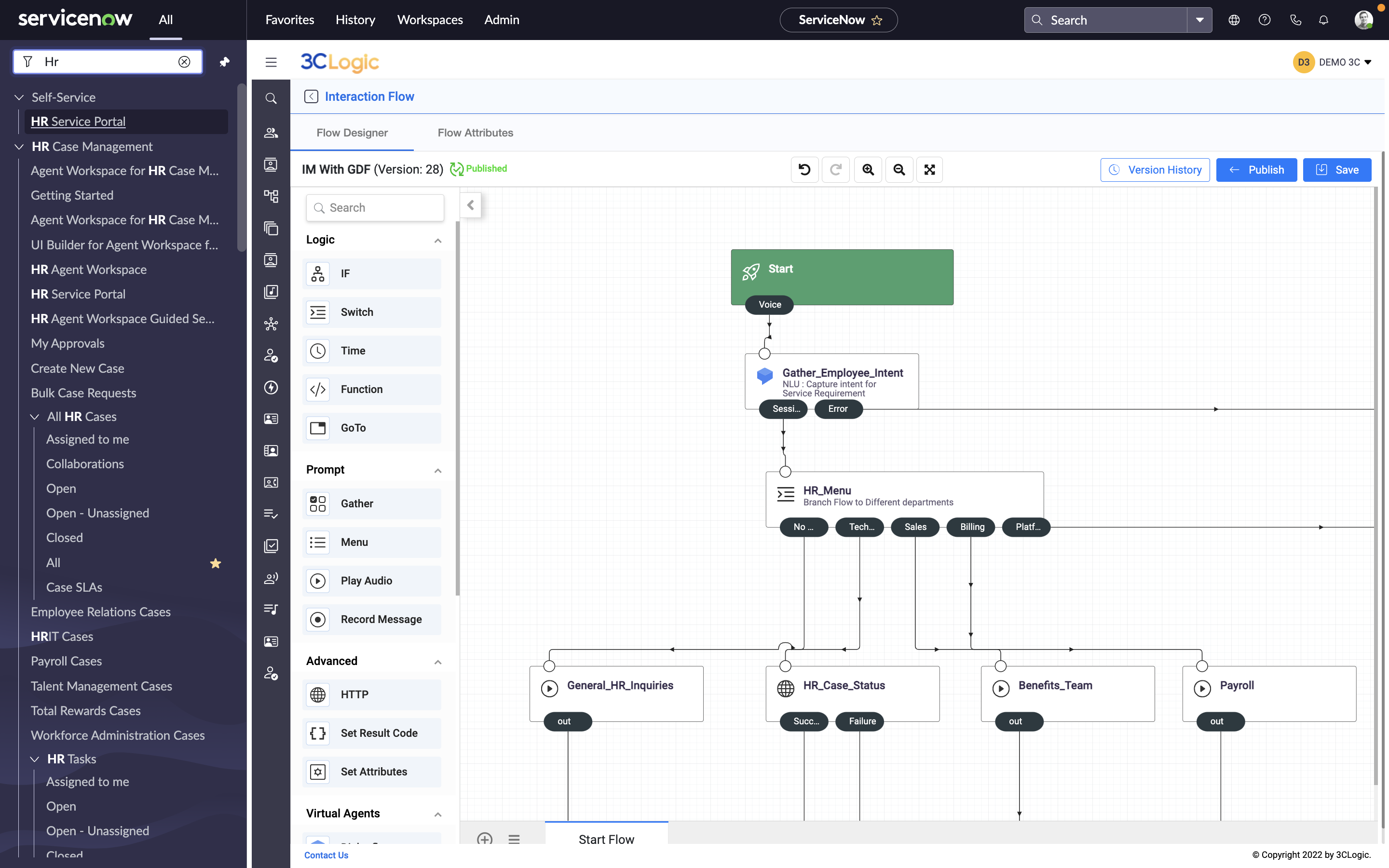Customer service isn’t just about solving problems anymore, it’s about creating seamless, connected experiences from the very first interaction. With ServiceNow CRM, organizations are already bridging the gap between departments, unifying customer data, and automating service workflows. But as customer expectations continue to evolve, so does the need for tools that enhance both speed and accuracy in live interactions.
That’s where Real-Time Transcription (RTT) comes in. When integrated with ServiceNow CRM, RTT captures and transcribes conversations as they happen, providing agents instant access to dialogue, reducing manual effort, and enabling smarter, faster support. So what exactly is RTT, and how is it transforming the way service teams operate within ServiceNow?
What is Real-time Transcription?
Real-time transcription is the live conversion of spoken words into written text as a conversation occurs. Using advanced speech recognition technology, it processes voice inputs, such as those during a phone call between a customer and agent, and displays the transcribed text within seconds, often with near-instant accuracy. The technology enables features including live captions, automated note-taking, and searchable conversation records, making it easier to follow discussions, retain information, and support accessibility in real time.
What are the key components of Real-time Transcription?
- 1. Audio Capture
- 2. Automatic Speech Recognition (ASR) Engine
- 3. Large Language Model (LLM)
- 4. Text Formatting and Punctuation
- 5. Speaker Diarization
1. Audio Capture
This is the starting point. Real-time transcription begins with capturing spoken words through microphones, headsets, or telephony systems. The quality of the audio input, including clarity, volume, and background noise, has a significant impact on the transcription’s accuracy. In voice calls, this often involves capturing both the customer and agent audio streams simultaneously.
2. Automatic Speech Recognition (ASR) Engine
At the heart of real-time transcription lies the ASR engine, which listens to the audio and translates it into text. It uses deep learning models trained on massive datasets of speech and language to recognize words and phrases. ASR continuously processes incoming audio in real time, making near-instant decisions about what’s being said.
3. Large Language Model (LLM)
Large Language Models help the ASR engine understand context and grammar. For example, it helps determine whether the speaker said "there" or "their" based on sentence structure. These models improve the fluency and coherence of the transcription, especially in industry-specific conversations that may involve jargon or technical terms.
4. Text Formatting and Punctuation
To make transcripts easy to read and useful in real time, transcription systems include automatic formatting features. This involves inserting punctuation, capitalizing proper nouns, and breaking text into readable segments. These refinements happen on the fly, enhancing readability and making it easier for agents and supervisors to follow along.
5. Speaker Diarization
In conversations with multiple participants, such as a voice call between agent and customer, speaker diarization identifies and distinguishes who is speaking. This is critical for customer service environments, where understanding who said what can impact how cases are documented, analyzed, or escalated.
How does RTT integrate and enhance ServiceNow?
In the world of customer service and IT service management, real-time transcription does more than just capture conversations, it enhances agent efficiency, improves customer experience, and streamlines operations. The true value emerges when RTT is integrated with ServiceNow, creating a seamless, data-driven experience. Let’s explore some of the key use cases:
Seamless Transitions from Voicebot to Live Agent
When a voicebot transfers a customer to a live agent, the transition can feel fragmented, especially if the customer has to repeat what they've already said. Real-time transcription (RTT) solves for this by capturing the full virtual interaction and turning it into a live transcript. With Now Assist in ServiceNow, a concise, context-rich summary is instantly generated and shared with the agent, while case fields are automatically populated. The result is a smooth, efficient handoff that saves time, reduces repetition, and improves the overall customer experience.
Enhancing Now Assist with Instant Transcription
Real-time transcription significantly amplifies the power of ServiceNow Now Assist by enabling spoken dialogue to be instantly available in text form during a call. The live transcript provides Now Assist immediate access to key information, allowing it to generate resolution notes, recommend relevant agent skills, and trigger automated workflows without delay.Instead of waiting until after a call ends to begin documentation or next steps, Now Assist can act in the moment, reducing the manual burden on agents.
A Safety Net for Missed Details
In fast-paced conversations, agents may miss important details. Real-time transcription acts as a live backup, allowing them to quickly reference what's been said without interrupting the customer. For supervisors, transcripts offer instant visibility into ongoing calls. With RTT and Now Assist, they can generate live summaries to step in with context or support as needed. Post-call, call transcripts also support agent coaching by highlighting areas for improvement.
Proactive Supervision via Instant Sentiment Analysis
As real-time transcripts are created, AI can analyze the customer’s tone and emotional state on the spot. This enables supervisors to receive instant alerts when a conversation shows signs of frustration or escalation. Instead of relying on post-call reviews, they can step in proactively—coaching agents or resolving issues in real time. Over time, these insights also reveal broader sentiment trends, helping leaders refine service strategies and enhance agent training.
Conclusion
Together, RTT and ServiceNow create a more responsive, intelligent, and efficient customer service environment. From real-time insights to automated documentation, the integration empowers both agents and supervisors to deliver better outcomes—faster and with less effort.
Ready to explore how real-time transcription can enhance your contact center?
Sign up for a live demonstration to learn more about 3CLogic’s AI-driven voice-first solution for ServiceNow.





